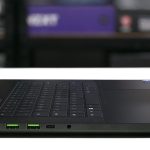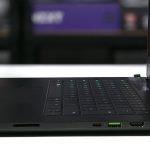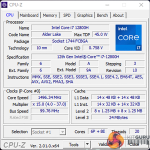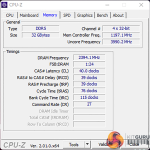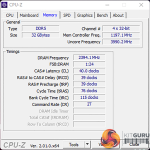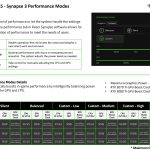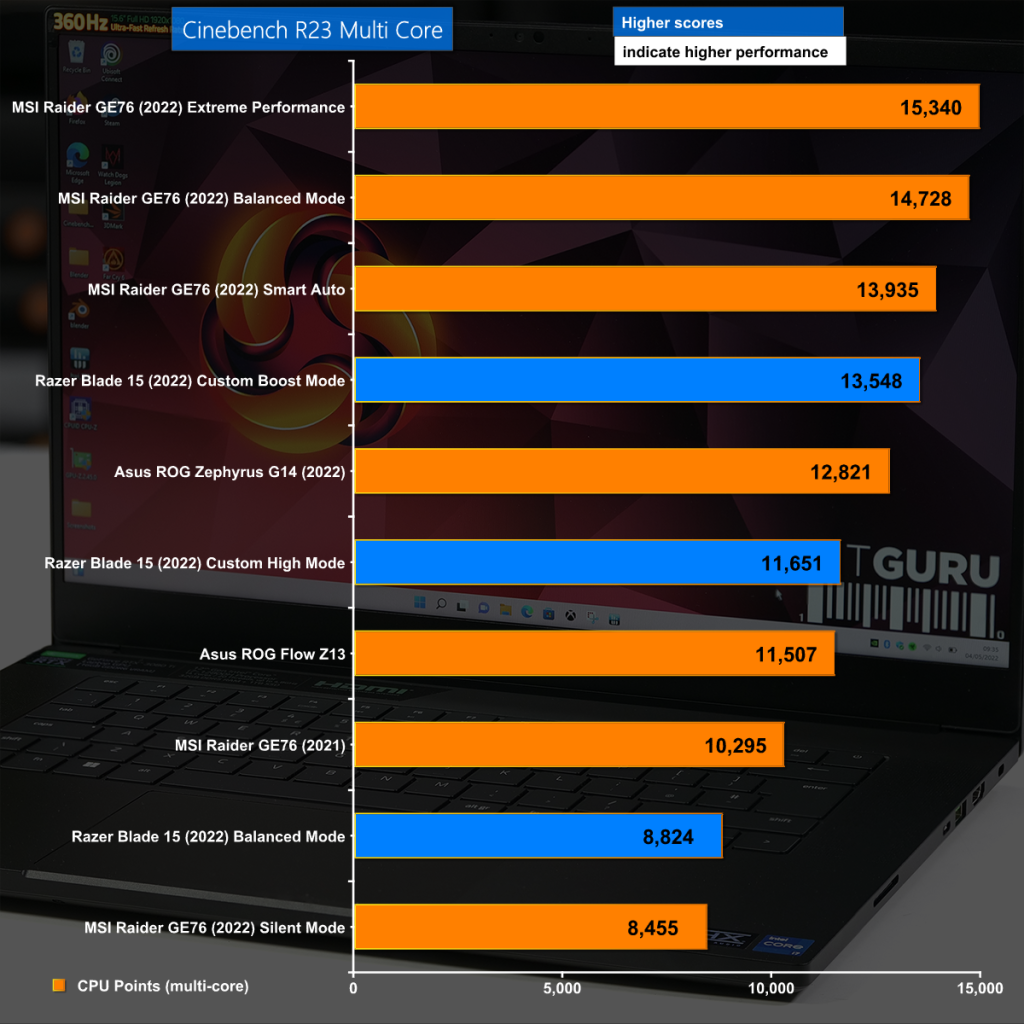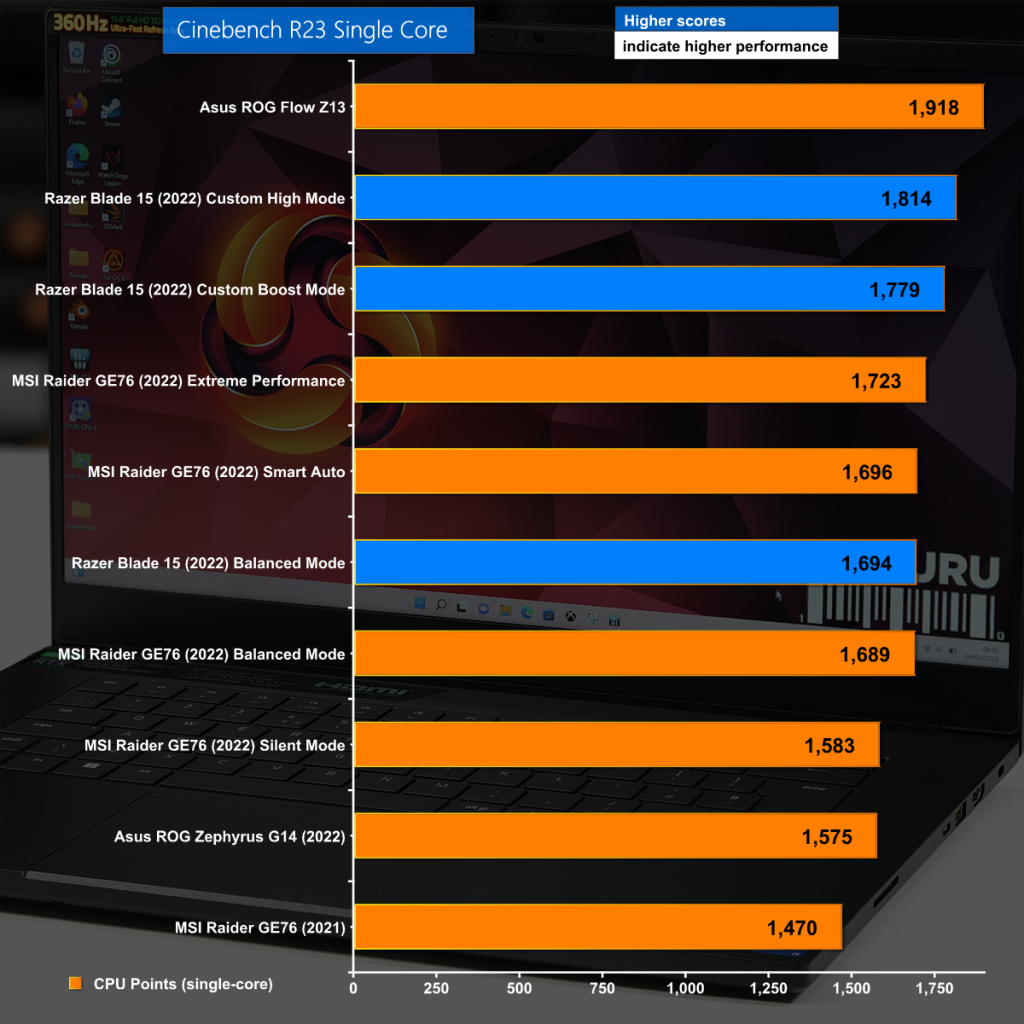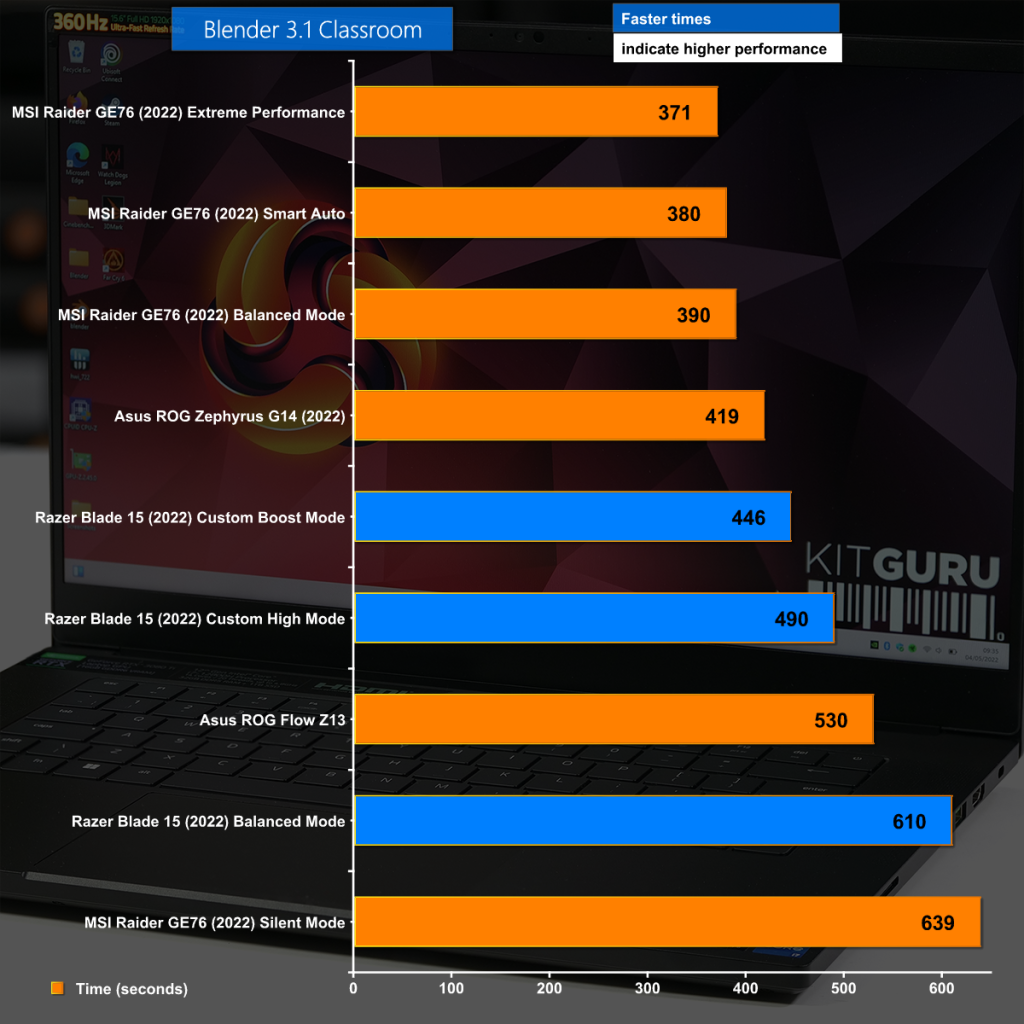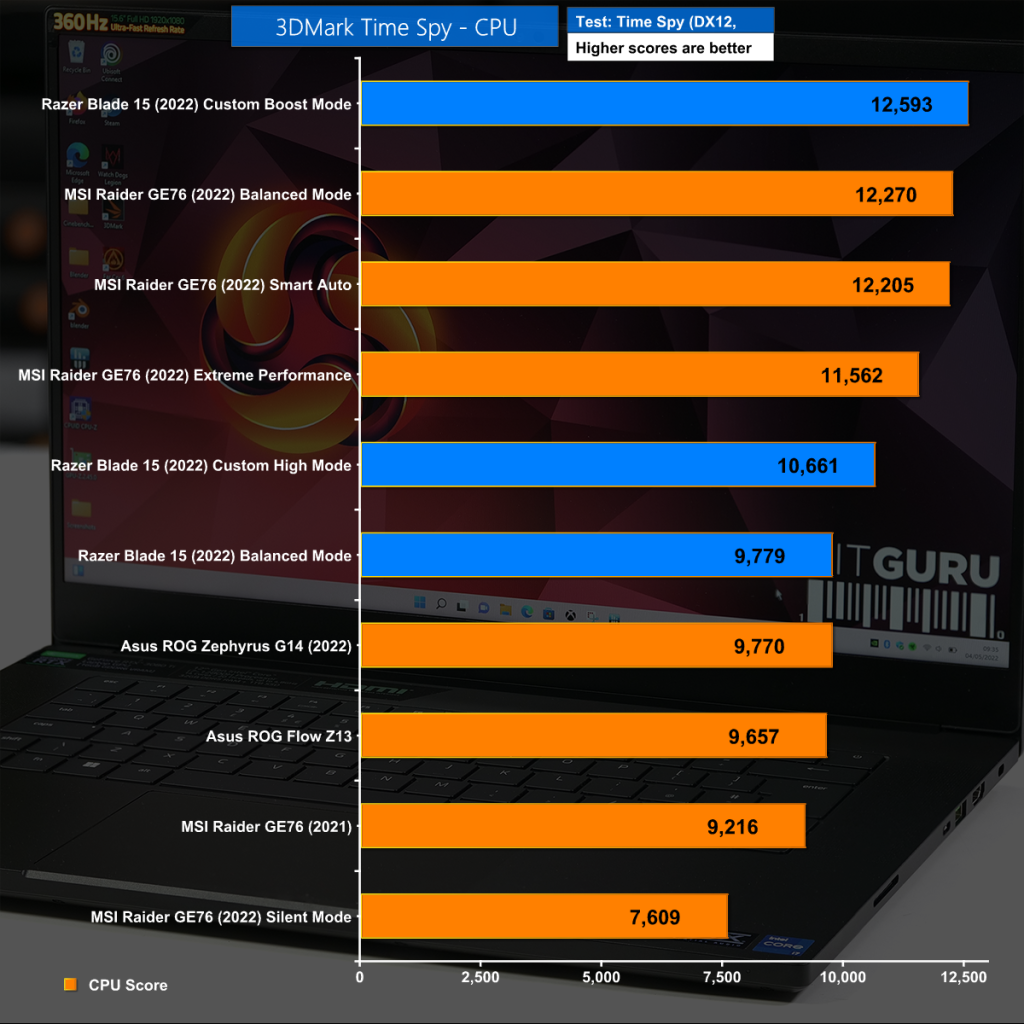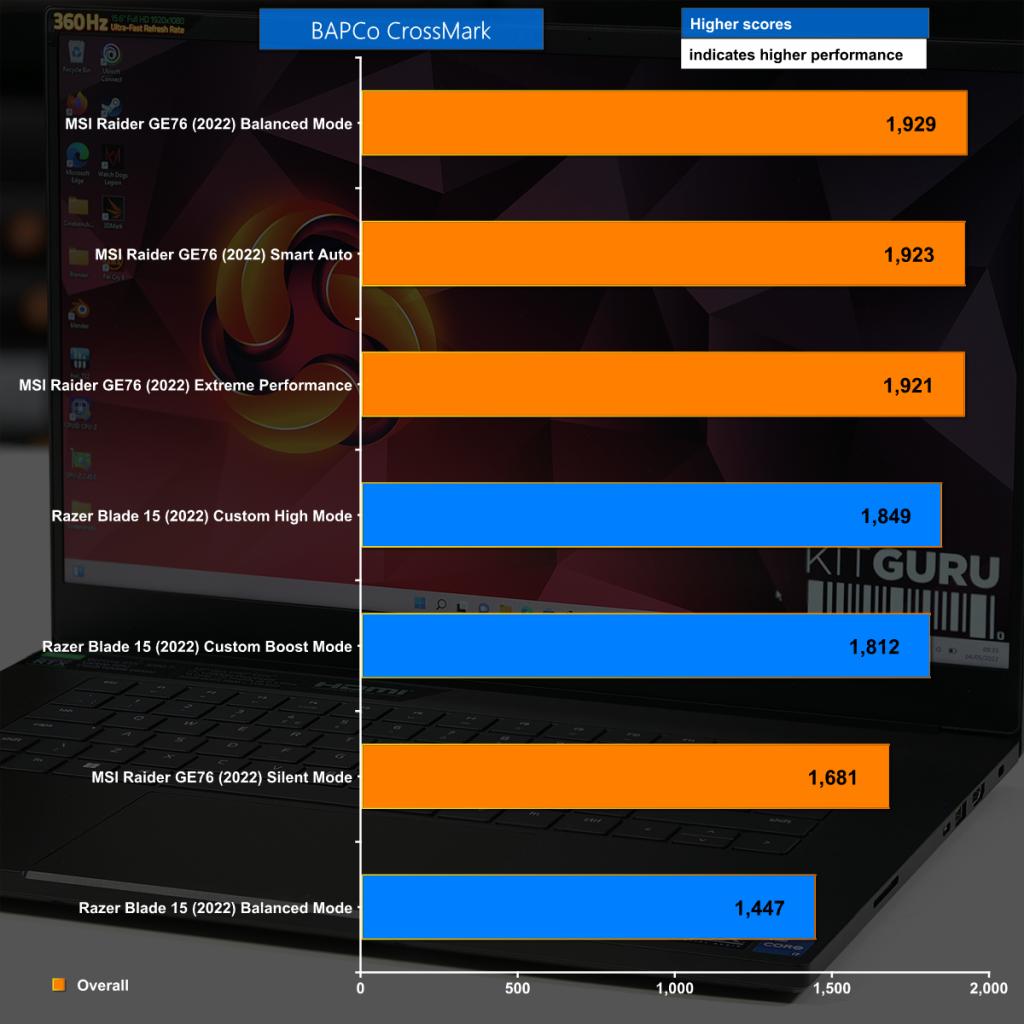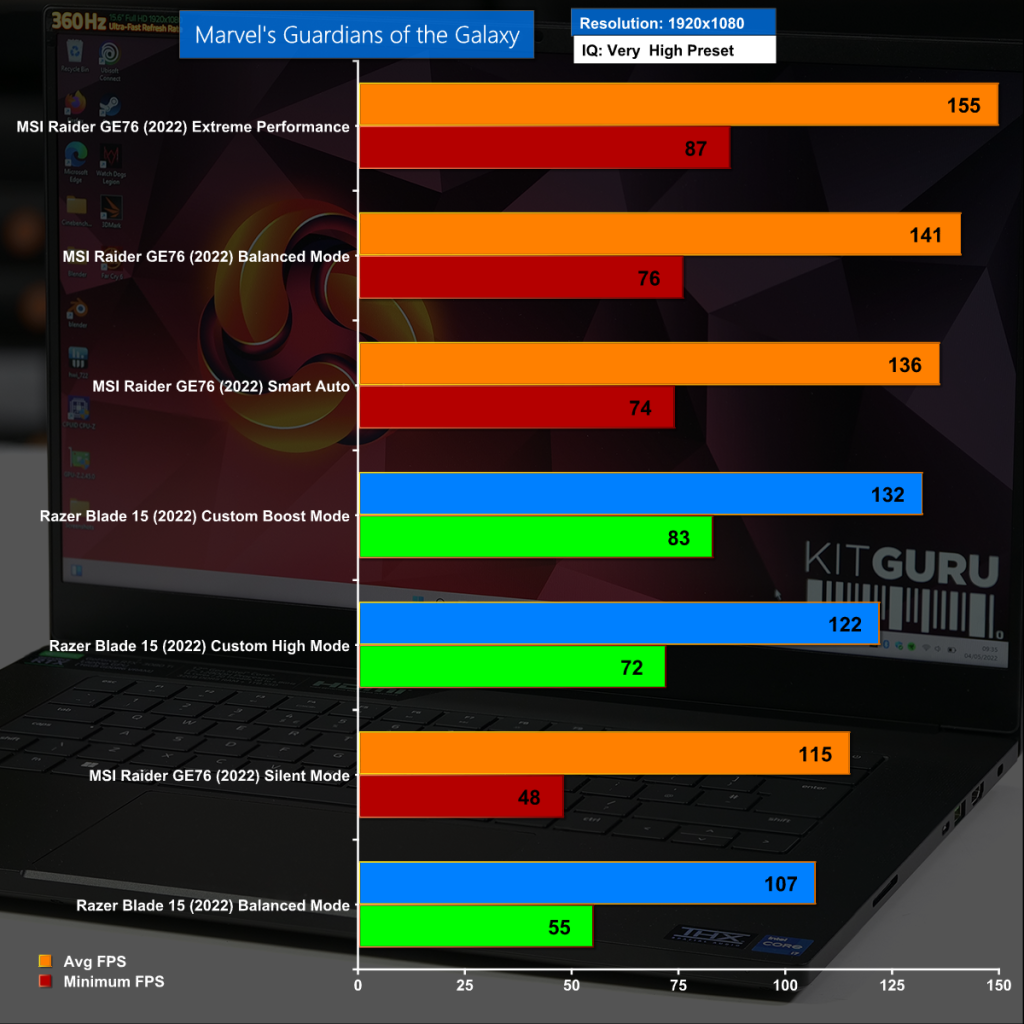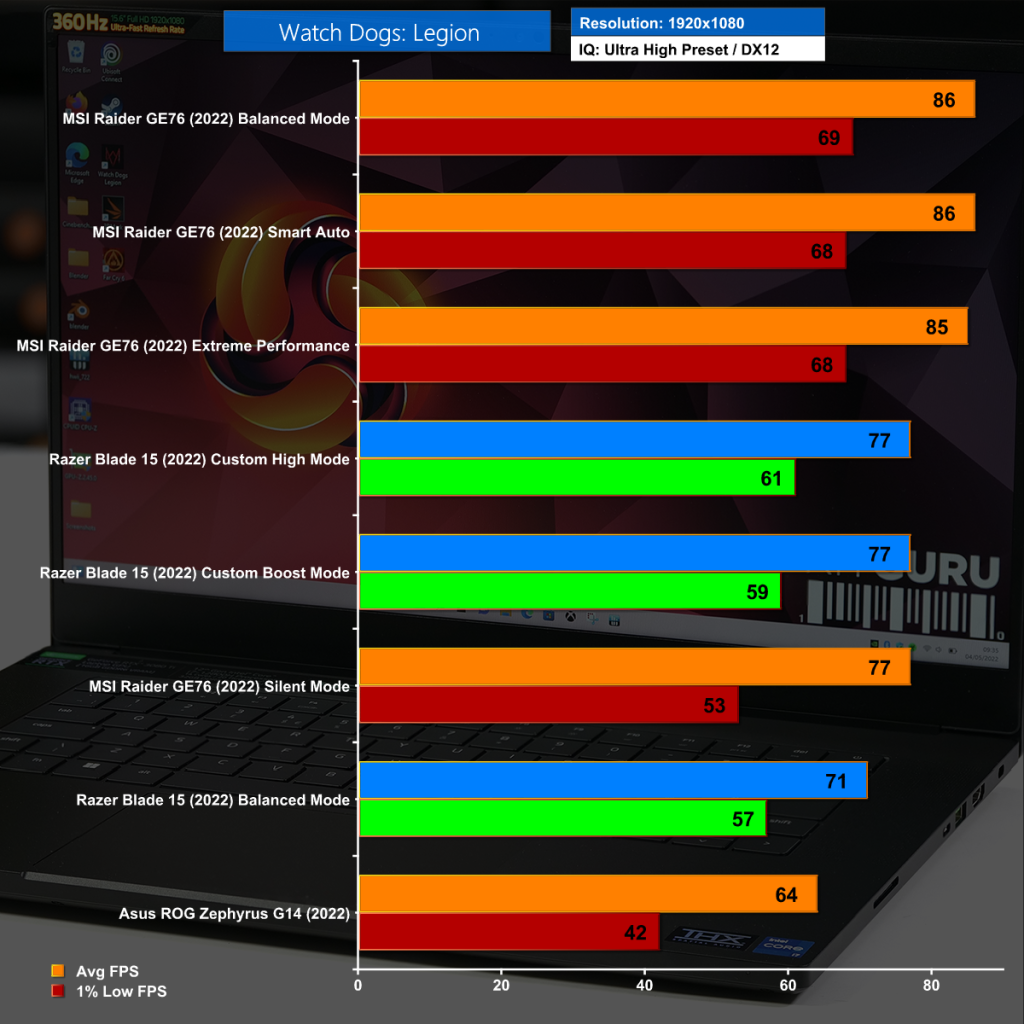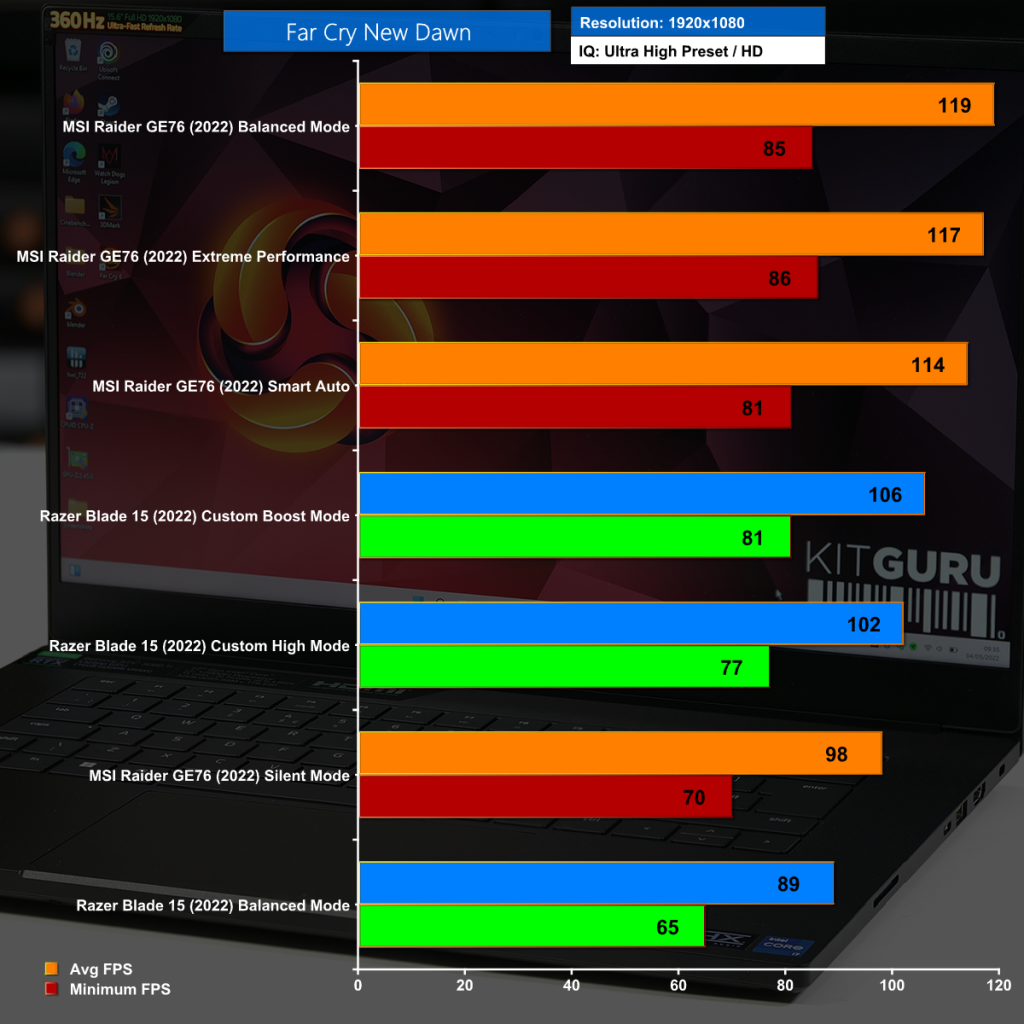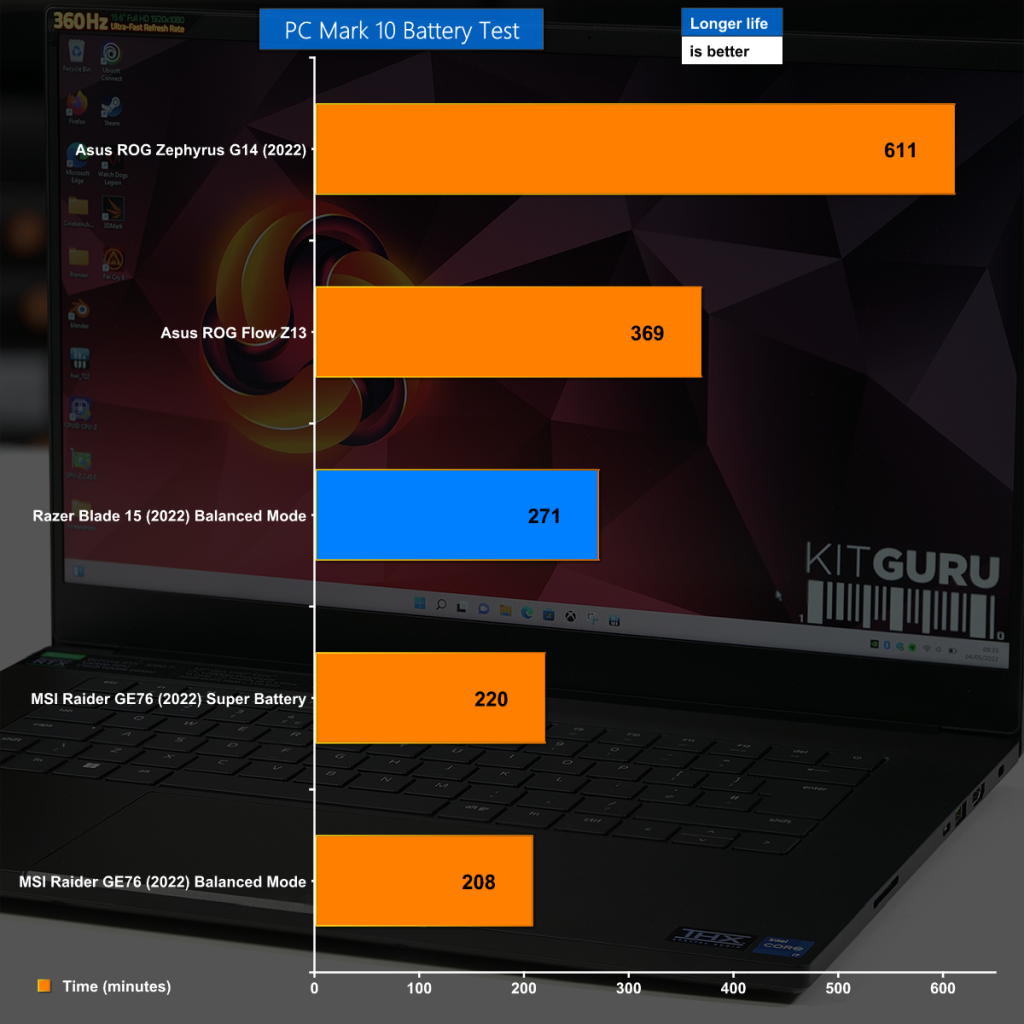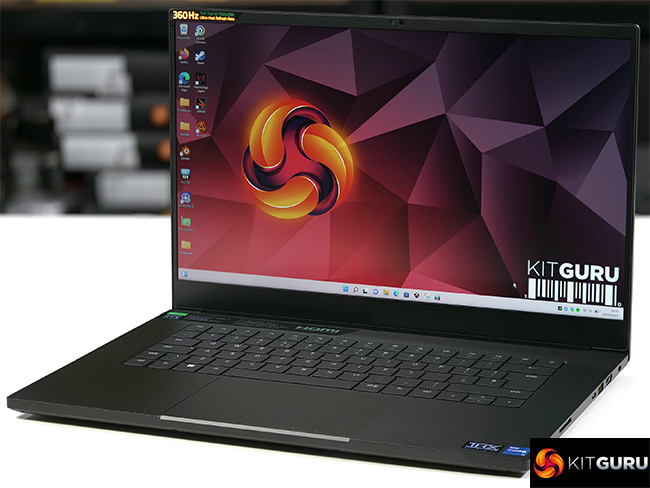
The latest Razer Blade packs a combination of Intel Core i7-12800H CPU and Nvidia RTX 3080 Ti graphics in a chassis that weighs 2kg and sports a 15.6-inch screen. We are reviewing the Full HD version with 360Hz refresh so there is plenty to talk about. Spoiler alert: we usually hate bundled apps so you may be stunned to learn that I have kind things to say about the included Synapse 3 software package.
Timestamps
00:00 Start
00:44 Details and specs
02:33 Display
03:12 Ports and Connectors
04:04 Keyboard
05:24 Speakers / software
06:23 A look inside the chassis
06:58 Razer Synapse software – testing modes
08:39 Test results
10:52 Leo's closing thoughts
Specification
- Processor: 14-core Intel i7-12800H processor, Turbo Boost up to 4.8GHz, with 24MB of Cache
- Display: 15.6-inch FHD 360Hz, 100% sRGB, 2ms, individually factory calibrated
- Graphics: Nvidia GeForce RTX 3080 Ti 16GB GDDR6 VRAM
- Memory: 32GB DDR5 4800MHz dual-channel memory (slotted)
- Storage: 1TB SSD M.2 NVMe PCIe 4.0 x4
- Connectivity: Killer Wireless Wi-Fi 6E AX1690, Bluetooth 5.2
- Input/Output:
- 1x Thunderbolt 4 USB-C
- 2x USB-C 3.2 Gen 2 – Supports Power Delivery 3 (15W)
- 3x USB-A 3.2 Gen 2
- Audio: 3.5mm Combo-Jack, Stereo 2.0, 8 Speakers, THX Spatial Audio, 2-Mic Array
- Battery: 5209Ah/80Wh
- Power adapter: 230W
- Dimensions: 16.99mm x 235mm x 355mm
- Weight: 2.01kg
- OS: Windows 11 Home
The hardware in the 2022 Razer Blades has been overhauled with an Intel 12th Gen CPU, Nvidia RTX 30-series graphics and DDR5 memory. The model we have on review packs a Core i7-12800H, RTX 3080 Ti graphics and 32GB of DDR5-4800 RAM.
With the bottom cover removed we can see the Razer Blade 15 is packed with hardware. The 80Wh battery takes up a fair amount of space and a good part of the rest is required for the vapour chamber that cools both CPU and GPU.
Our review sample of the Blade 15 was fitted with a 360Hz Full HD display which looks very good, albeit the brightness is nothing special at 300 nits. We would be interested to see the 240Hz Quad HD option, however the third choice of a 144Hz 4K display does not make much sense to us as the size is simply too small.
Razer's Synapse 3 software is key to the performance of the Blade 15 and controls the power limits for the CPU and GPU. As we demonstrate in our video, Balanced mode is the equivalent of Silent or Quiet mode. Changing to Custom-High mode allows the hardware to start working properly. It is only when you select Custom-Boost that you start to scratch the surface of what the RTX 3080 Ti can achieve by which time the fans are running fast and loud.
Testing and Performance – CPU
In the Multi Core test of Cinebench R23 the Razer Blade does a reasonable job, provided you give it enough power to work correctly, however it is trounced by the competition.
In the Single Core test of Cinebench R23 we see that power plays little part in the equation and the Razer Blade performs well.
Blender 3.1 goes the same way as Cinebench R23 and the limitations on power are clear for us to see.
The CPU element of 3D Mark Time Spy is interesting as it allows the Razer Blade to stretch its legs. We do not understand how it manages to beat the faster MSI Raider but score one for Razer.
BAPCo CrossMark tests the whole system and we can see the impact of restricting power to both the CPU and the GPU as the results are fairly dire for the new Blade.
Testing and Performance – Games
Marvel's Guardians of the Galaxy shows the Razer Blade delivering a decent gaming experience however it falls a long way short of the potential of the 360Hz display and is beaten to the tune of 20fps by the MSI Raider.
In Watch Dogs: Legion the frame rates are consistently above 60fps which means the game is both playable and looks great, however the Raider runs 10fps faster.
Far Cry New Dawn also shows the Razer Blade 15 performing well however we can see the true potential of the hardware in MSI's Raider where it is delivering 10-15 more frames per second.
Moving on to Far Cry 6 we have another good gaming experience however the Razer is missing out to the tune of 10fps.
Battery and Closing Thoughts
Battery life is acceptable without being anything special and you will most likely want to travel with the charger in your backpack at all times.
We were excited to see the changes Razer has made with the new Blade 15 but it quickly became clear the laptop is fighting a losing battle against power and heat.
We can see the evidence in the name as the smaller Blade14 chassis is used for AMD CPUs while the combination of Intel and Nvidia hardware requires the larger Blade 15 or 17 chassis. It is surely no coincidence the MSI GE76 Raider that we refer to throughout our review uses a substantial 17-inch chassis.
Razer has employed a large vapour chamber cooling system that cools both the CPU and GPU and has then topped off the system with their Synapse 3 software which controls power limits, fan curves, Optimus/Dedicated GPU settings and RGB lighting in the keyboard.
The settings within Synapse 3 give us a clear picture of the compromises faced by Razer. In Balanced mode the laptop is lovely and quiet, however the CPU is limited to 35W PL1 and the graphics to 95W which effectively cripples the expensive hardware. In Custom High mode the CPU operates at its 45W TDP and the graphics have 105W to work with. Push things to the limit with Custom Boost mode and the CPU runs on 65W, the maximum graphics power is 105W and the cooling fans are howling away and making a fair racket.
Contrast that with the larger MSI GE76 Raider which can feed 72W to the CPU (the PL1 limit is 110W) and 165W to the graphics and you can see exactly why the Razer Blade 15 is crushed by the MSI Raider GE76 in our charts.
You can buy the Razer Blade 15 (2022) directly from Razer for £3899.99 HERE.
Discuss on our Facebook page HERE.
Pros:
- Colourful, sharp, fast screen.
- Lovely large glass touchpad.
- Razer Synapse software works well.
- Smart styling and premium feel, although it might be time for an update.
- Audio is loud (but could use more bass).
Cons:
- Steep price.
- The compact chassis restricts the power available for CPU and GPU.
- Keyboard action has a very short travel.
- We would like to see a 100W Power Delivery 3.0 USB-C charger included.
KitGuru says: Razer Blade 15 is badly hurt by the poor power efficiency of the Intel and Nvidia hardware.
 KitGuru KitGuru.net – Tech News | Hardware News | Hardware Reviews | IOS | Mobile | Gaming | Graphics Cards
KitGuru KitGuru.net – Tech News | Hardware News | Hardware Reviews | IOS | Mobile | Gaming | Graphics Cards




